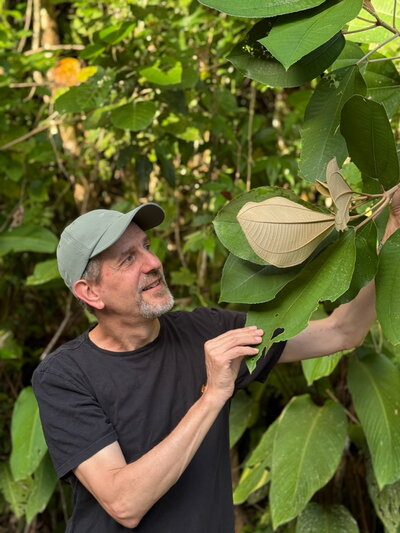
A University of Illinois team recently published new research in the Proceedings of the National Academy of Sciences based on their ongoing work on Barro Colorado Island (BCI), a key research site in the Panama Canal's Gatun Lake. Their new paper discusses the important question of how tropical regions, known for their rich variety of species, maintain such biodiversity considering the growing threats to these ecosystems.
Over the years, scientists have proposed several theories to explain the high levels of biodiversity in tropical forests. However, it's not just the number of species, but also how the population sizes change over time. Understanding these changes is crucial since they can indicate the risk of species disappearing and the overall biodiversity loss.
Despite the urgency, we still don't fully understand what causes these population changes. The research that was conducted introduces a new theoretical approach focused on life history, which refers to the typical patterns of growth, death, and reproduction across a species’ life cycle.
“We looked at the traditional theories such as demographic and environmental noise and asked, well what if there is a secret third thing affecting these populations,” said graduate student Kenneth Jops. “We wanted to see if we could get something closer to the distribution of population fluctuations just using things we can observe. We found the demographic noise alone doesn’t predict the fluctuation sizes we see in real systems. By including life history and breaking populations down into life stages, we get a far more accurate model. Essentially, we changed the dimensionality in which we look at individual species, which is something more complicated, but still informed only by census observations.”
Using these theories, a model was created to predict how the population of a particular species might fluctuate over time within a larger community. To test this model, a study of 90 species was done utilizing BCI, a location protected by the Smithsonian Tropical Research Institute.

“Having long term observation plots like the BCI are extremely important to us,” said Jops. “There are reasons to go out and not only protect but count thousands of trees. The more descriptive data about populations we have, the more theorists can do things like this research with them. It allows us to make broader predictions about biodiversity and understanding the direction in which things are going, how to intervene, and how to protect vulnerable species.”
The findings from this new paper show that life history is a key factor in explaining why species populations vary over time. Their approach offers better explanations than previous models, which did not consider life history or relied on assumptions about species interactions and environmental factors that weren't directly observed. Utilizing this new framework could help develop more comprehensive models to predict biodiversity changes and assess the risk of species loss, especially as human activities impact these ecosystems.
"Understanding the determinants of population sizes and their fluctuations is really challenging,” said co-Principal Investigator James Dalling. “This study underlines the importance of consistent long-term data collection over decades to answer this, and other questions about the future of tropical forests."
This research was conducted through the O’Dwyer Lab using a recent NSF grant.